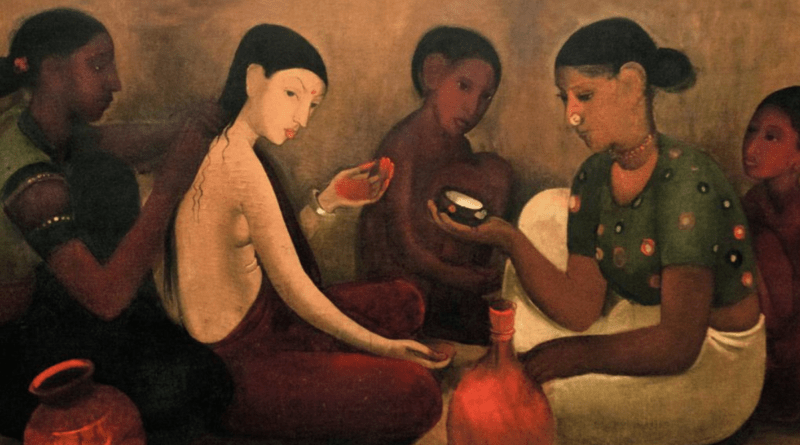Know Amrita’s Spectacular Achievement And India’s New Art Talents
Last month, we witnessed a groundbreaking event in art as Amrita Sher-Gil’s renowned oil on canvas, The Story Teller, fetched a staggering 61.8 crore at Saffronart, setting a new record.
Though The artist, a Sikh-Hungarian painter, tragically passed away in 1941 at 28. This sale marked the highest bid ever made on a painting by an Indian woman artist, showcasing her indelible influence on the art world.
Sher-Gil’s journey challenged the established norm of male dominance in art. Her artistic transformation, particularly in The Story Teller, reflected a shift towards a more Indian style influenced by her deep study of miniatures and the cave paintings at Ajanta and Ellora.
This piece, a personal favourite of Sher-Gil, was notably among the few she painted outside her studio.
Just ten days before, the auction saw the sale of modernist Syed Haider Raza&’s Gestation for 51.7 crore at Pundole’s auction, including his renownedBindu,” securing its position as India’s second most expensive piece of art, surpassed only by the work of abstractionist V.S. Gaitonde.
Dinesh Vazirani, the CEO of Saffronart, described The Story Teller as a rare gem due to the limited presence of Sher-Gil’s works from that period in private collections, as most of her significant oil Paintings are national treasures housed in public museums.
The surge in the art market impacts auctions. It has a trickle-down effect on gallery and individual sales, with Sher-Gil’s work serving as an inspiration for female artists striving for recognition.
However, amidst celebrating this success, concerns arose over whether this focus on iconic figures and soaring auction prices might overshadow emerging talent. The spotlight, often monopolised by male artists globally, raises questions about the support available for modern artists and the need for more investment in budding talents.
The preference for traditional forms such as oil on canvas further sidelines artists exploring alternative mediums like performance art, street art, installations,
and ephemera.
Suresh Jayaram, a respected artist and founding member of 1 Shanti Road, emphasised the need for a more democratic and accessible art scene, advocating for support through college art festivals and local auctions to bolster emerging artists. Despite the challenges, Gopal Mirchandani, a collector and writer, acknowledged the positive impact on established artists, emphasising the necessity of creating opportunities for the up-and-coming generation.
The dynamics of the art market remain a topic of debate, with some, like Bhavna Kakar, owner of Latitude 28 gallery, recognising the market’s robust performance but questioning its direct impact on mid-career artists.
The need for a deeper understanding of art and the encouragement of open ended discussions beyond conventional settings was highlighted as crucial by various voices in the art world.
While young Indian artists continue to gain recognition on a global scale, the engagement of Collectors and curators at international art fairs have significantly contributed to their exposure and success. As the world becomes more familiar with Indian artists and their diverse works, the resonance and sales of their art at global art events have increased, signifying a promising future for the Indian art scene on the international stage.




